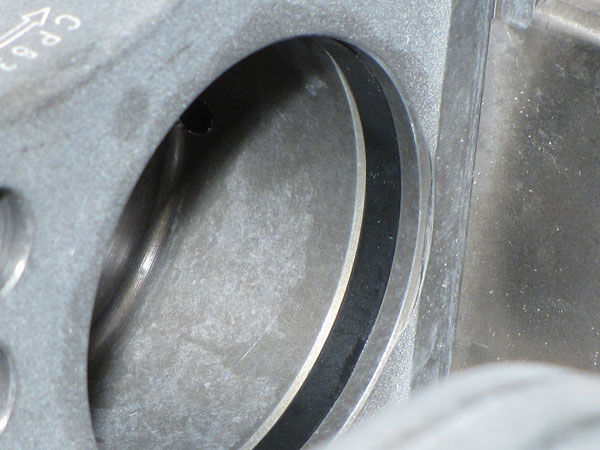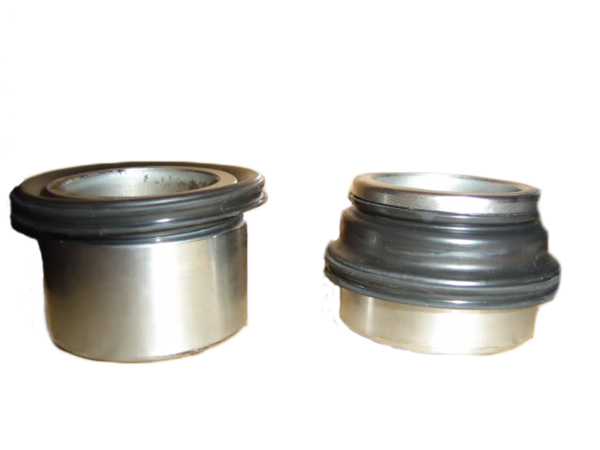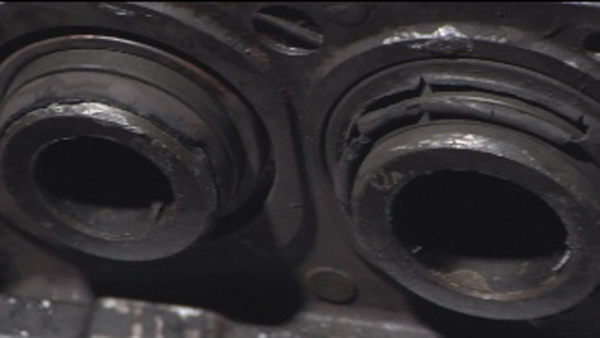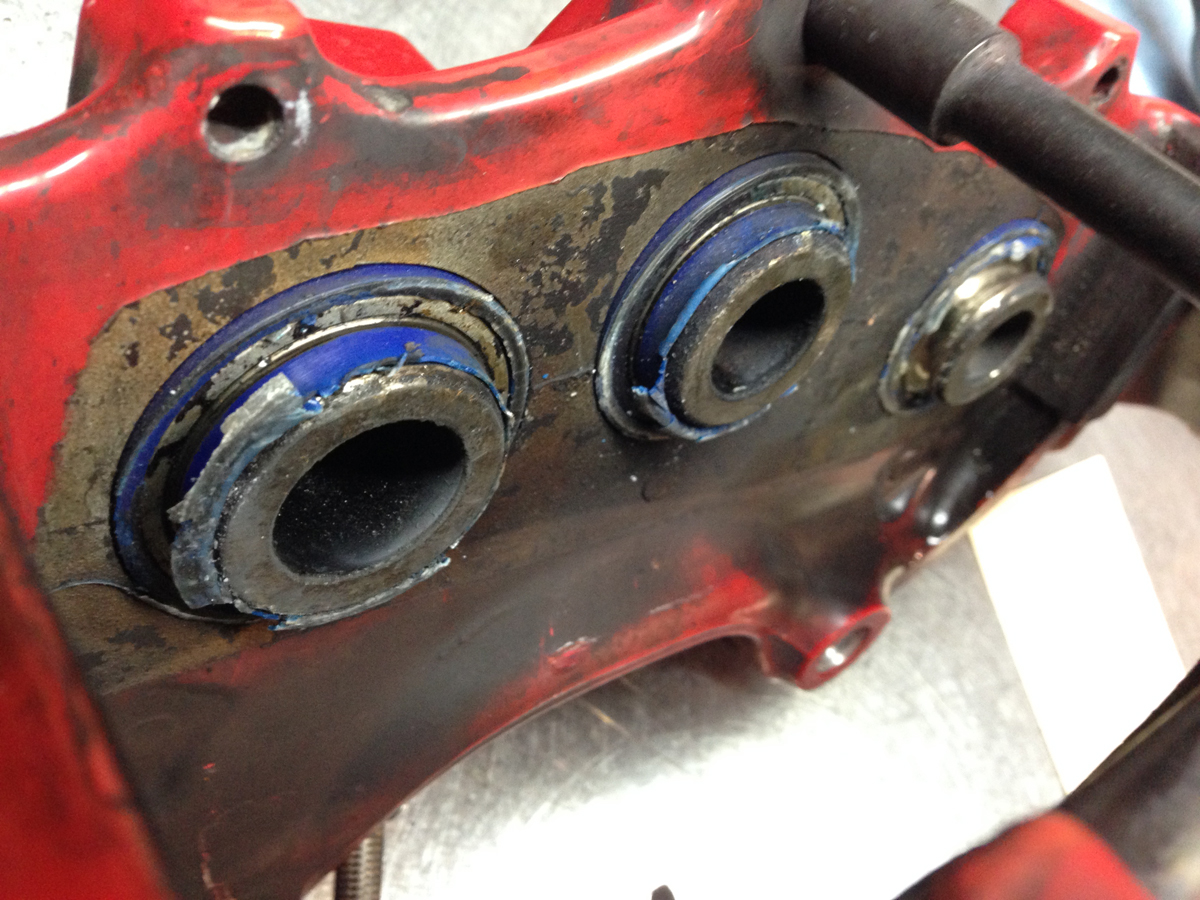Quote:
Originally Posted by Poochie

I see the pin for the quick pad swap but I'm assuming you still need a small C-clamp on deck to push back in the pistons, as any typical brake set up?
Or is a comparable tool included or recommend?
|
Yes, the pistons still need to be pushed back into the bores. As noted, some people use old pad backing plates, others use a piece of soft wood, etc. Regardless, your best bet when doing so is always to cover whatever you're using with a rag/towel. If you gouge up the sides and edges of the pistons with something hard, you run the risk of them damaging your internal caliper seals when the pistons are pushed back into the bores.
Quote:
I took a closer look at the AP set up.. It's a quality built and their durability claim seems to check out..
For instance, a standard mono-block OEM caliper has a rubber piston seal, there is no way around that.. On high stressed/temperature applications, like the track, that rubber seal could possible melt like S'mores..
The AP set up doesn't utilize a rubber seals for its pistons; that itself allows for more guarantees longevity, regardless of how much temperature it's caliper was possible exposed to..
|
Just to be clear, there are internal piston seals and there are dust boots. Internal piston seals are inside the piston bores. They keep the fluid from escaping the caliper around the side of the pistons. They look like the pic below.

From our website:
We are often asked by potential customers if the calipers in our kits require frequent maintenance and rebuilding because the pistons don't have dust boots. We are perpetually shocked by this question because it makes no intuitive sense. If you have a product that is specifically designed to handle the extraordinary high-heat conditions of track use, why would it require more maintenance when used under those conditions vs. brake components that were designed to cruise around on the streets at low speed and temperature?
Many people confuse piston seals with dust boots. All calipers have seals. They're the little rubbery rings inside the piston bores (see pic below). If a caliper didn't have a seal, your brake fluid would leak out around the pistons! OEM caliper seals arenít designed to handle constant trips to several hundred degrees without becoming brittle and leaking. Our calipers use special high-temp seals designed for track use. They are the exact same high temperature seals used in NASCAR Sprint Cup, ALMS, DTM, etc. That means they are less likely to get brittle and wear out when used under high-heat track conditions, and they require far LESS frequent replacement and servicing.
Most aftermarket calipers are designed for year round road use, and as such come with a bellows style external dust boot like the ones shown below. The rubber boot stretches as the piston extends, and its objective is to keep contaminants out of the piston bore. It's a nice concept, but we've seen customers burn those up in a single 20 minute track session! Once that happens, you're simply driving around with some tattered, burnt rubber bits attached to your pistons. At that point they're providing zero benefits to you. If you're going to instantly destroy them when you go to the track, why worry about having them in the first place? We skip making that mess for you by eliminating them from our design.
Here are what OEM dust boots look like:
Pre-track use

After a good track beating

Here's another...This one is off a Camaro 1LE and this one had aftermarket dust boots on it.

Here's a little more info on how the seals work, and how they interact with the anti-knockback springs in our AP Racing kits:
As you're driving the suspension is constantly compressing, the disc is moving around laterally, and the pads are being pushed slightly away from the disc. Think of the seals in the caliper as a spring or hinge attached to the side of the piston, rather than just a ring through which the piston slides. In an AP Racing competition caliper, the groove in which the seal resides isn't a square cut groove.It has angles. When the pistons slide in or out there is friction between the outer piston wall and the seal, and the seal distorts a bit as shown in the illustration below.
A caliper piston sliding out to the left would distort the seal in this manner (the slashes are the seals on either side of the piston):
/
---
---
\
As the piston slides back in to the right, the seal does this:
\
---
---
/
There is a certain amount of tension or friction that needs to be overcome before the piston actually starts moving through the seal ring. That tension/friction keeps the piston from dragging on the disc once the pistons are pushed back into the bores by the disc/suspension movement.
When AKB springs are added, a little more force is required to push the pistons back into their bores than would be required without them. After the spring is compressed, it unloads and pushes the piston back to 'neutral.'
With the proper seal and spring the goal is to keep the piston in the 'neutral' position, not pressed against the disc. The piston is still able to slide freely in either direction, but a bit of friction or tension needs to be overcome initially to get it moving in either direction. The seal offers that first bit of friction to limit movement, and then the spring provides additional resistance. The end result is that the properly designed AP Racing calipers won't drag or create additional or unnecessary wear.